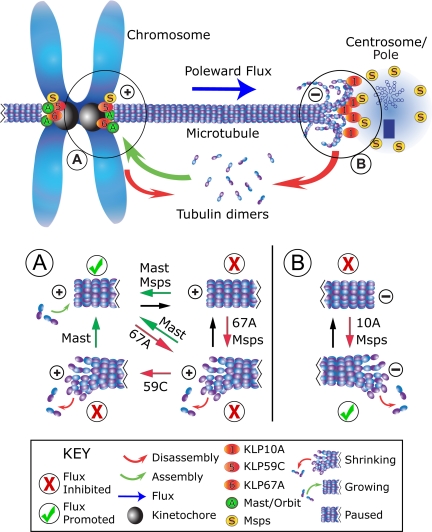Figure 5.
Model of poleward flux regulation. In this representation of a metaphase half-spindle, flux rate is governed by the rates of gain (green arrow) or loss (red arrows) of tubulin subunits at microtubule ends, whose dynamic states are regulated by flux components (labeled spheres) positioned at either end. Plus-ends are switched between assembly states (i.e., either assembling, paused, or disassembling), subject to the activities of several proteins, but minus ends appear to be influenced by activities that promote disassembly. See figure key (bottom) for identification of markings. (A) At plus ends, flux rate is regulated by Mast and KLP67A, which antagonistically interact to determine the assembly state. KLP59C activity is not required for flux, but does functionally interact with Mast. This situation might arise if KLP59C does not induce catastrophes, but instead operates a step away by maintaining the disassembly state. Conditions that favor or inhibit flux are marked with a checkmark or ×, respectively. (B) At minus ends, flux requires both KLP10A and Msps. KLP10A drives minus-end disassembly. Msps may increase microtubule dynamicity by inhibiting the paused state at both microtubule ends.

